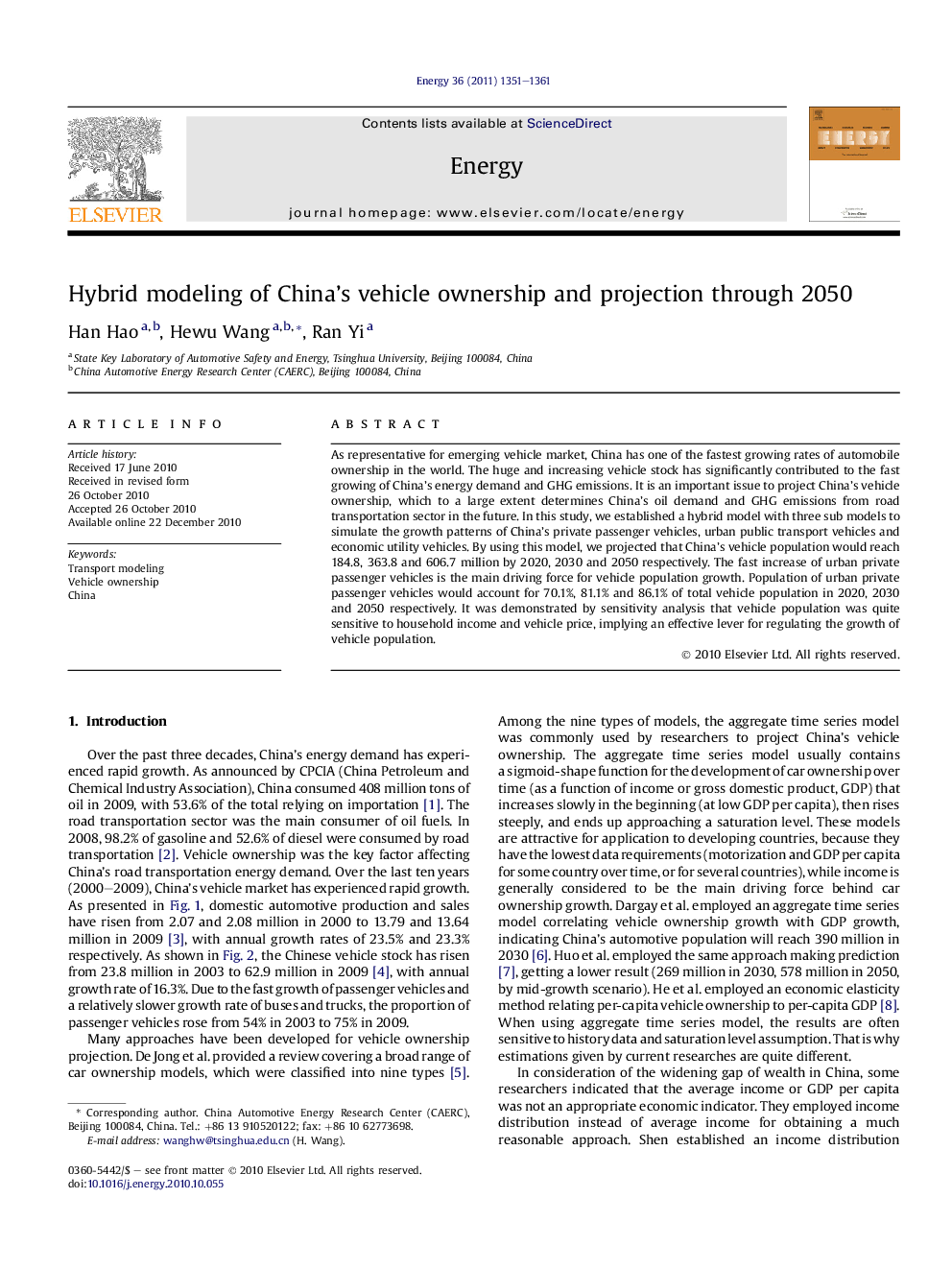| Article ID | Journal | Published Year | Pages | File Type |
|---|---|---|---|---|
| 1734674 | Energy | 2011 | 11 Pages |
As representative for emerging vehicle market, China has one of the fastest growing rates of automobile ownership in the world. The huge and increasing vehicle stock has significantly contributed to the fast growing of China’s energy demand and GHG emissions. It is an important issue to project China’s vehicle ownership, which to a large extent determines China’s oil demand and GHG emissions from road transportation sector in the future. In this study, we established a hybrid model with three sub models to simulate the growth patterns of China’s private passenger vehicles, urban public transport vehicles and economic utility vehicles. By using this model, we projected that China’s vehicle population would reach 184.8, 363.8 and 606.7 million by 2020, 2030 and 2050 respectively. The fast increase of urban private passenger vehicles is the main driving force for vehicle population growth. Population of urban private passenger vehicles would account for 70.1%, 81.1% and 86.1% of total vehicle population in 2020, 2030 and 2050 respectively. It was demonstrated by sensitivity analysis that vehicle population was quite sensitive to household income and vehicle price, implying an effective lever for regulating the growth of vehicle population.
Research highlights► This paper established a hybrid model with three sub models to simulate the growth patterns of China’s private passenger vehicles, urban public transport vehicles and economic utility vehicles. ► By using this model, we projected that China’s vehicle population would reach 184.8, 363.8 and 606.7 million by 2020, 2030 and 2050 respectively. ► Factors including income, vehicle price, population, urbanization and GDP can be taken into consideration and their effect on vehicle ownership can be estimated by hybrid modeling. ► Growth patterns of private passenger vehicles, public transportation vehicles and commercial vehicles can be described by respective models with hybrid modeling, making the modeling closer to reality.
